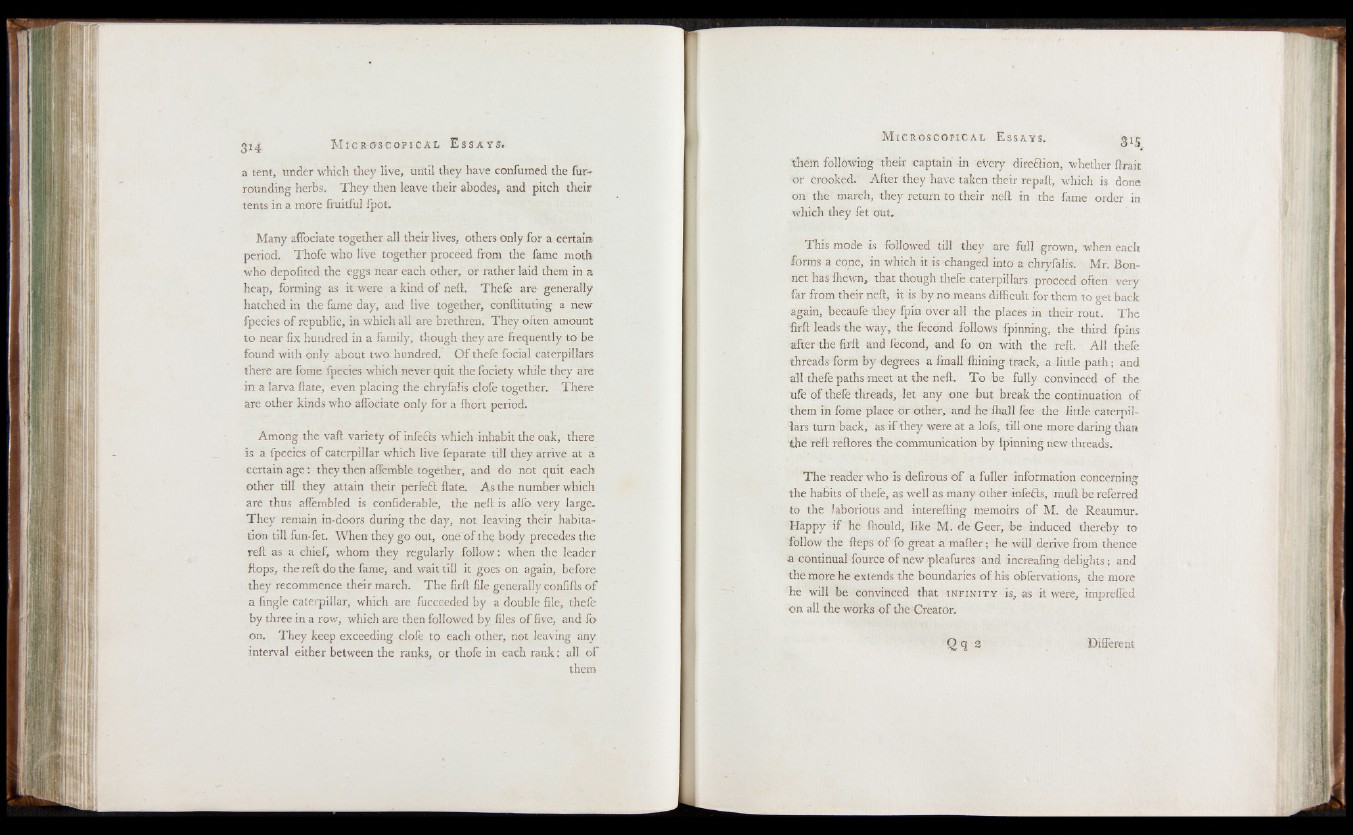
3H Micros cop ical E s s a y s .
a tent, under which they live, until they have confumed the furrounding
herbs. They then leave their abodes, and pitch their
tents in a more fruitful fpot.
Many affociate together all their lives, others only for a certain»
period. Thofe who live together proceed from the fame moth
who depofited the eggs near each other, or rather laid them in a
heap, forming as it were a kind o f neft. Thefe are generally
hatched in the fame day, and live together, conftituting a new
fpecies o f republic, in which all are brethren. They often amount
to near fix hundred in a family, though they are frequently to be
found with only about two hundred. O f thefe focial caterpillars
there are fome fpecies which never quit the fociety while they are
in a larva ftate, even placing the chryfalis clofe together. There
are other kinds who affociate only for a fhort period.
Among the vaft variety of infects which inhabit the oak, there
is a fpecies o f caterpillar which live feparate till they arrive at a
certain age : they then afiemble together, and do not quit each
other till they attain their perfeft ftate. As the number which
are thus aflembled is confiderable, the neft is alio very large.
They remain in-doors during the day, not leaving their habitation
till fun-fet. When they go out, one o f the body precedes the
reft as a chief, whom they regularly fo llow w h en the leader
flops, the reft do the fame, and wait till it goes on again, before
they recommence their march. The firft file generally Confifts o f
a fingle caterpillar, which are fucceeded by a double file, thefe
by three in a row, which are then followed by files of five, and fo
on. They keep exceeding clofe to each other, not leaving any
interval either between the ranks, or thofe in each rank: all o f
them
M i c ros cop i c a l E s says . 315,
them following their captain in every direftion, whether ftrait
or crooked.' After they have taken their repaft, which is done
on the march, they return to their neft in the fame order in
which they fet out.
This mode is followed till they are full grown, when each
forms a cone, in which it is changed into a chryfalis. Mr. Bonnet
has {hewn, that though thefe caterpillars proceed often very
far from their neft, it is by no means difficult for them to get back
again, becaufe they fpin over all the places in their rout. The
firft leads the way, the fecond follows fpinning, the third fpins
after the firft and fecond, and fo on with the reft. All thefe
threads form by degrees a ftnall fhining track, a little padi; and
all thefe paths meet at the neft. T o be fully convinced o f the
ufe of thefe threads, let any one but break the continuation o f
them in fome place o r other, and he fhall fee the little caterpillars
turn back, as if they were at a lofs, till one more daring than
the reft reftores the communication by fpinning new threads.
The reader who is defirous o f a fuller information concerning
the habits o f thefe, as well as many other infeSs, muft be referred
to the laborious and interefting memoirs o f M. de Reaumur.
Happy if he fhould, like M. de Geer, be induced thereby to
follow the fteps o f fo great a mafter; he will derive from thence
a continual fource o f new pleafures and increafing delights ; and
the more he extends the boundaries o f his obfervations, the more
h e will be convinced that i n f i n i t y is, as it were, impreffed
on all the works o f the Creator.
<2q 2 Different